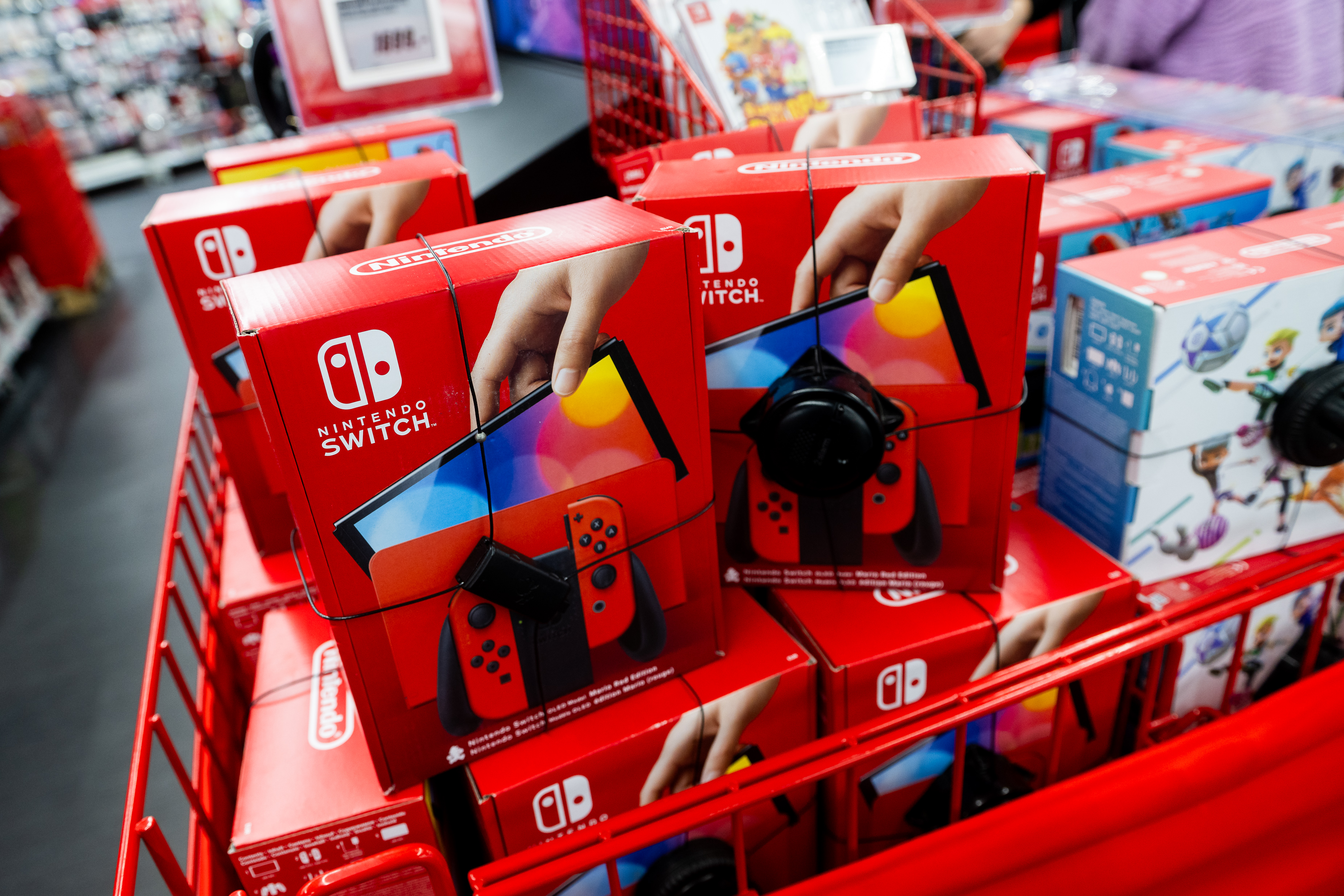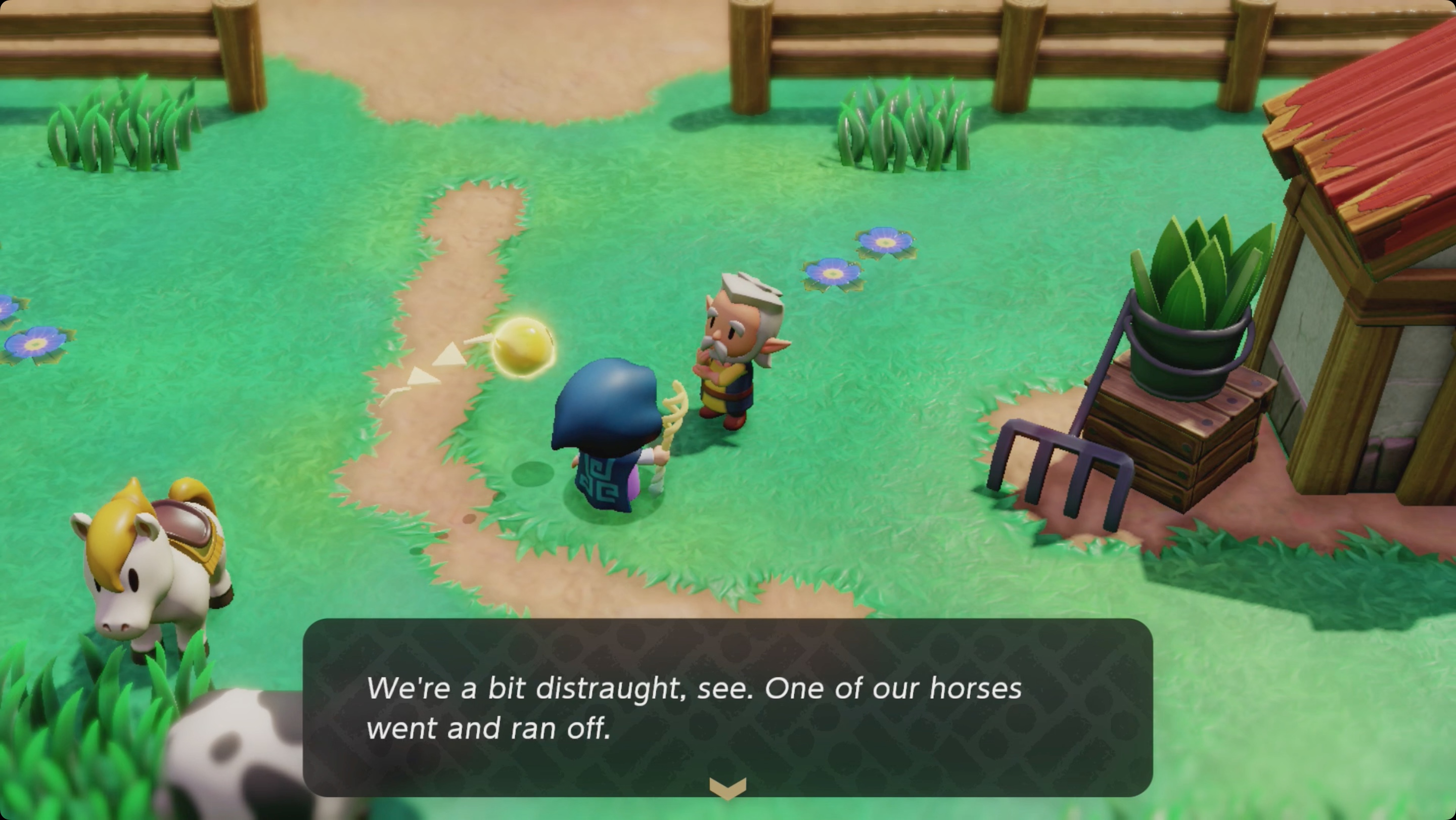Before players meet Rauru in The Legend of Zelda: Tears of the Kingdom, they see his arm. At the very beginning of the game, Link doesn’t really know what’s going on, but he wakes up with a mysterious appendage that’s not his — and that allows him to harness incredible powers. It’s not much later that Link meets a spirit version of Rauru, the first king of Hyrule and a character who belongs to a race of creatures called the Zonai. In lending Link his arm, Rauru gave the hero the means to go out into the wide world of Hyrule and realize the carefully laid plans of Princess Zelda.
Despite the fact that the Zonai are not physically present in Link’s era, this ancient civilization forms a foundational part of the game’s world. Their technology allows Link to build machines to traverse the land and overcome challenges. Early in the game, Rauru himself appears in spirit form to Link and serves as a key guide in Link’s journey to find Zelda. Polygon sat down with Zelda producer Eiji Aonuma and Tears of the Kingdom director Hidemaro Fujibayashi. There, Fujibayashi spoke at length about the writing of Rauru and the team’s approach to creating the Zonai.
[Ed. note: This interview was conducted through interpreters. The quotes have been edited and condensed for clarity. This interview also contains spoilers for the end of the “Dragon’s Tears” main quest in The Legend of Zelda: Tears of the Kingdom.]
Although some players theorized that traces of Zonai civilization were present in Breath of the Wild, this group didn’t appear as characters. Tears of the Kingdom introduced the Zonai characters Rauru and Mineru, and made their technology a key aspect of the gameplay. The game built out the world and lore of the Zonai considerably, which was one of the biggest additions to the world of Breath of the Wild.
“I’ll start by saying that whenever we create Zelda titles, it’s gameplay first,” Fujibayashi said. “So when we’re thinking about wanting to, you know, add elements like the Ultra Hand or the ability to create, that’s something that comes first. And with the story of Breath of the Wild, we intentionally left some things unanswered — and so fast-forward to when we were working in creating Tears of the Kingdom. What we wanted to do was to include this ability to create. Looking at what we have from Breath of the Wild, what seemed to fit right with that idea is this concept of the Zonai and the Zonai devices — well, devices before people discover that there are Zonai — and we thought that adding this element into it helps us expand and flesh out the story in a way that makes sense to add these gameplay elements.”
:no_upscale()/cdn.vox-cdn.com/uploads/chorus_asset/file/25166479/vlcsnap_2023_12_15_15h32m32s856.png)
Tears of the Kingdom starts off by giving Link a relatively simple task: Find Zelda. As players progress through several quests, Link learns that the princess didn’t just get kidnapped. She accidentally traveled in time all the way back to the distant past of Hyrule to around the time of its founding. There, she meets Rauru and Mineru, two Zonai who had helped establish the new nation and are now navigating a growing conflict with the Gerudo leader, Ganondorf. Over the course of one of the main quests, Link uncovers records of Zelda’s memories during that time period that help him piece together her whereabouts and the history of Hyrule. Although successful players will be able to defeat Ganondorf in the very end, Zelda’s memories nonetheless contain a tragedy. Rauru and Mineru, the only two Zonai depicted in the game, die in a fight against Ganondorf that happened long ago. Although we see the impact of the Zonai through the devices they left, Link never meets them in the flesh — only in spirit. According to Fujibayashi, the separation between past and present aided the kind of story the team wanted to tell with Rauru.
“What I wanted to do was create kind of two different sides of Rauru. You can call it an A-side and B-side. So the A-side is the Rauru of the past, and the B-side is what you see in the present. The A-side Rauru, the one in the past, is what you see through the story unfold[ing] through the Dragon Tears and also through the eyes of Zelda, and you see how Rauru interacts with Zelda, and his feelings, his thoughts towards Zelda. And then there’s the B-side where, with all of that past, with all of that story, with that relationship with Zelda, we show how Rauru interacts with Link in the present world.”
:no_upscale()/cdn.vox-cdn.com/uploads/chorus_asset/file/24703394/totk_shrine_zonai_rauru_sonia.jpg)
The Rauru of the present knows how the story went in the past — including his own tragic end, as well as the end of the Zonai. But the Rauru of the past knows about the future, too, thanks to the appearance of Zelda. “And so there’s the Rauru of the past that has this relationship with Zelda,” Fujibayashi went on. “He interacts with Zelda knowing that this is the night, that Zelda had so many expectations for him, and what he expects out of himself. And we thought that mixing those two Rauru together would be kind of a shame, to mix those together and create one character, and so that’s why we intentionally separated [that] out so that there’s only the past Rauru [who] only meets with Zelda, and there’s a modern Rauru.”
In the end, the Zonai meet a tragic end, but this duality of Rauru allows him to be present in the world in other ways. He ends up serving as the crucial connection between Link and Zelda, even when thousands of years separate the two. It’s a sad but meaningful role for a character who has become a newly beloved character in Zelda canon.






